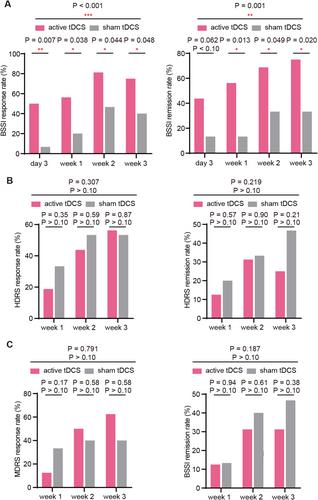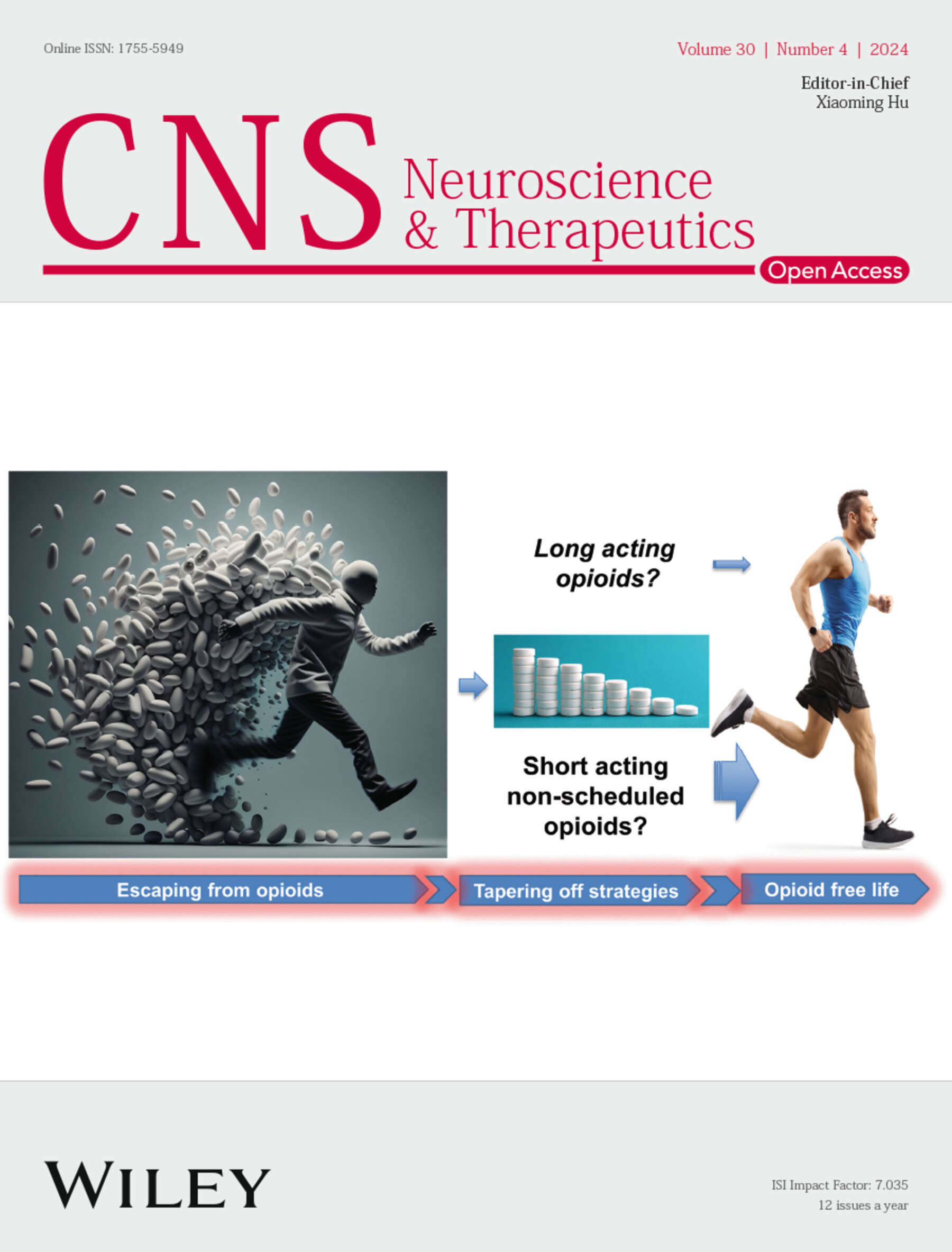Efficacy and Safety of Transcranial Direct Current Stimulation as an Add-On Trial Treatment for Acute Bipolar Depression Patients With Suicidal Ideation
Abstract
Aims
Bipolar depression poses an overwhelming suicide risk. We aimed to examine the efficacy and safety of transcranial direct current stimulation (tDCS) combined with quetiapine in bipolar patients as a suicidal intervention.
Methods
In a single-center, double-blind, treatment-naive bipolar depression patients with suicidal ideation were randomly assigned to quetiapine in combination with either active (n = 16) or sham (n = 15) tDCS over the left dorsolateral prefrontal cortex for three consecutive weeks. The 30-min, 2-mA tDCS was conducted twice a day on the weekday of the first week and then once a day on the weekdays of the two following weeks. Primary efficacy outcome measure was the change in the Beck Scale for Suicidal Ideation (BSSI). Secondary outcomes included changes on the 17-item Hamilton Depression Rating Scale (HDRS-17) and Montgomery-Asberg Depression Rating Scale (MADRS). Outcome was evaluated on Day 3 and weekend. Safety outcome was based on the reported adverse reactions.
Results
Active tDCS was superior to sham tDCS on the BSSI at Day 3 and tended to sustain every weekend during the treatment process, compared to baseline. However, no difference between active and sham in HDRS-17 and MADRS was found. Response and remission rate also supported the antisuicide effect of tDCS, with higher response and remission rate in BSSI, but no antidepressant effect, compared to sham, over time. Regarding safety, active tDCS was well tolerated and all the adverse reactions reported were mild and limited to transient scalp discomfort.
Conclusion
The tDCS was effective as an antisuicide treatment for acute bipolar depression patients with suicidal ideation, with minimal side effects reported.


 求助内容:
求助内容: 应助结果提醒方式:
应助结果提醒方式:


